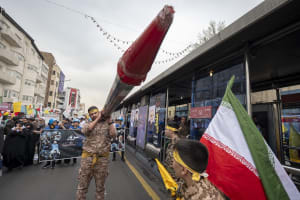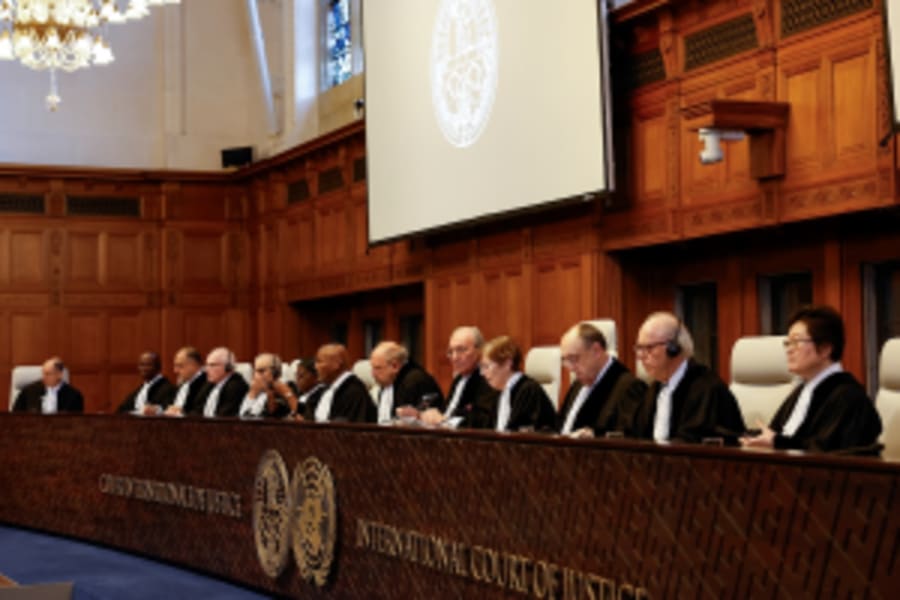Lag B’Omer celebrated in the wake of last year’s deadly tragedy on Mt. Meron
One year after the disaster, thousands of Jewish worshippers gather at the tomb of Rabbi Shimon bar Yochai, in compliance with new safety protocols

Lag B’Omer is observed annually as a minor holiday in the Jewish tradition, well-known for the custom of lighting bonfires.
But on Wednesday night, Israel marked the religious celebration in the shadow of the devastating tragedy – just one year prior – in which 45 people were crushed to death and another 150 injured at the Mt. Meron pilgrimage site in northern Israel.
At the time, Lag B’Omer was the largest mass gathering in Israel since the onset of the COVID pandemic.
The horrible incident began when some 100,000 worshippers poured out of one section of the mountainside compound, passing through a narrow corridor with a wet floor that led to a staircase. Some people tripped and slipped near the top of the stairs, as those behind them continued ahead, crushing and trampling over the victims.
This year, new police protocols were established to ensure public safety, while a state inquiry into the 2021 disaster is still underway.
“The Government of Israel has made a considerable investment in order to facilitate an extensive and safe participation,” said Israeli Prime Minister Naftali Bennett in a statement. “I ask the public to act in accordance with the directives that have been published and to go only with a ticket so that we can have a safe celebration. This also applies to those celebrating around the country – follow the safety rules.”
Bennett thanked the police and Religious Affairs Minister Matan Kahana, who took upon himself the careful planning of this year’s event. Under the new safety guidelines, attendees were only able to use public transportation to reach the mountain and, in order to control crowd density, each visitor was given a time limit to attend the celebration.
The Israeli premier sent his greetings to thousands of worshippers who went up on the mountain to visit the tomb of Rabbi Shimon bar Yochai, believed to be the father of Jewish mysticism.
“The celebration on Mt. Meron is an event that expresses love of Israel, bringing people together, holiness and joy. The celebration brings the entire Jewish people together – religious and secular, ultra-orthodox and traditional, everyone together!” he added.
In the Jewish tradition, Lag B’Omer occurs on the 33rd day of the Omer, the 49-day period between the holidays of Passover and Shavuot. It is considered to mark the end of the semi-mourning period of the Omer, that allows for weddings to take place and permits getting haircuts.
As for the origins of the holiday – there are a few explanations and none of them are definitive.
According to the Talmud, a central text in rabbinic Judaism, God created a plague during the time of Rabbi Akiva that killed 24,000 of his students, leaving him with only five. One of those five remaining students was Bar Yochai. He went on to become the greatest teacher of Torah in his generation and is purported to have authored the ‘Zohar,’ a landmark text of Jewish mysticism.
Lag B’Omer is supposedly the day in which the plague finally ended, but followers of Jewish mysticism also observe it as the annual memorial of Bar Yochai’s death, with the bonfire representing the "spiritual light" brought into the world.
For other Jewish believers, bonfires symbolize the signal fires that Jewish rebels lit on the mountaintops to relay messages during the Bar Kokhba revolt against the Romans in 132 A.D., which resulted in the destruction of Jerusalem and its temple, leaving 580,000 Jewish casualties.

Tal Heinrich is a senior correspondent for both ALL ISRAEL NEWS and ALL ARAB NEWS. She is currently based in New York City. Tal also provides reports and analysis for Israeli Hebrew media Channel 14 News.














